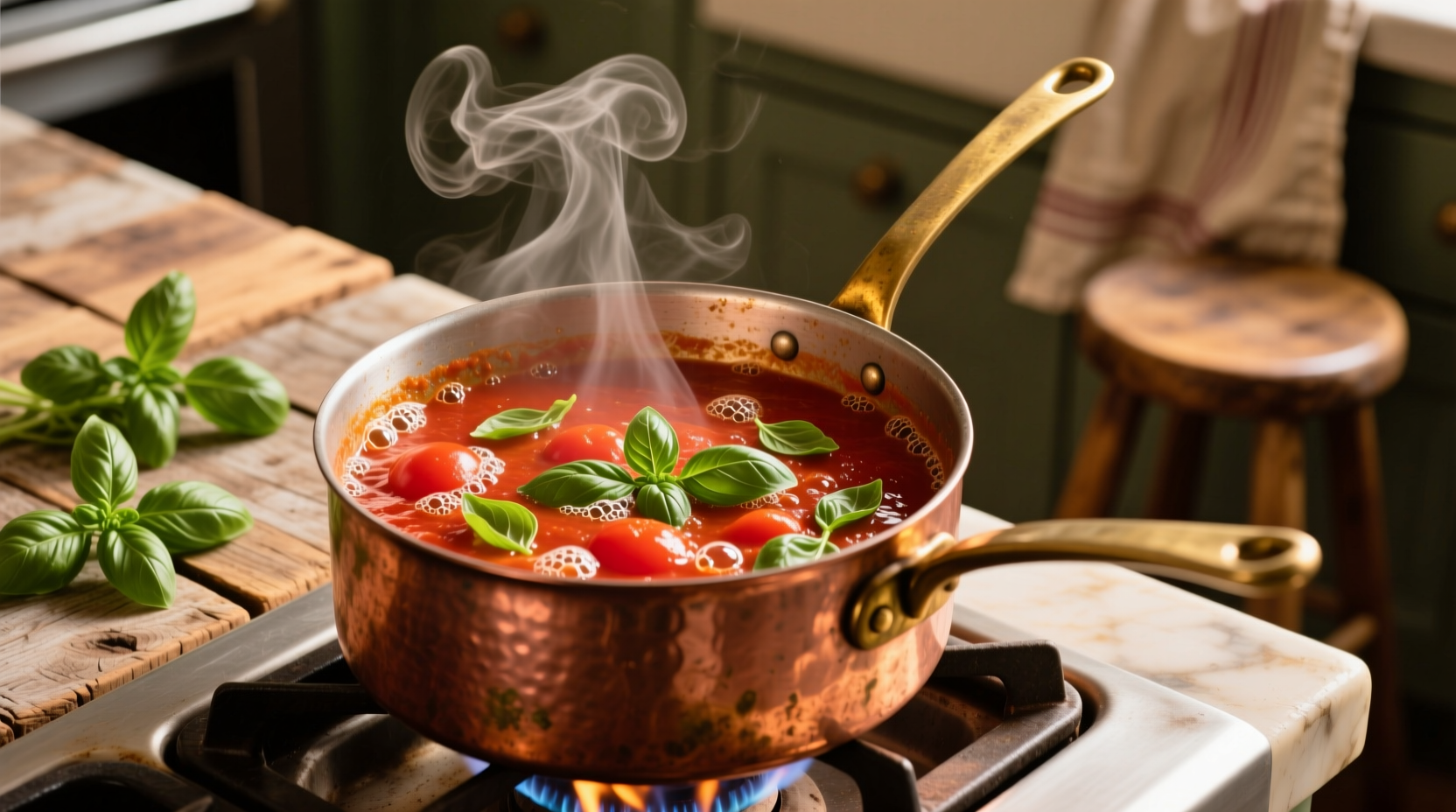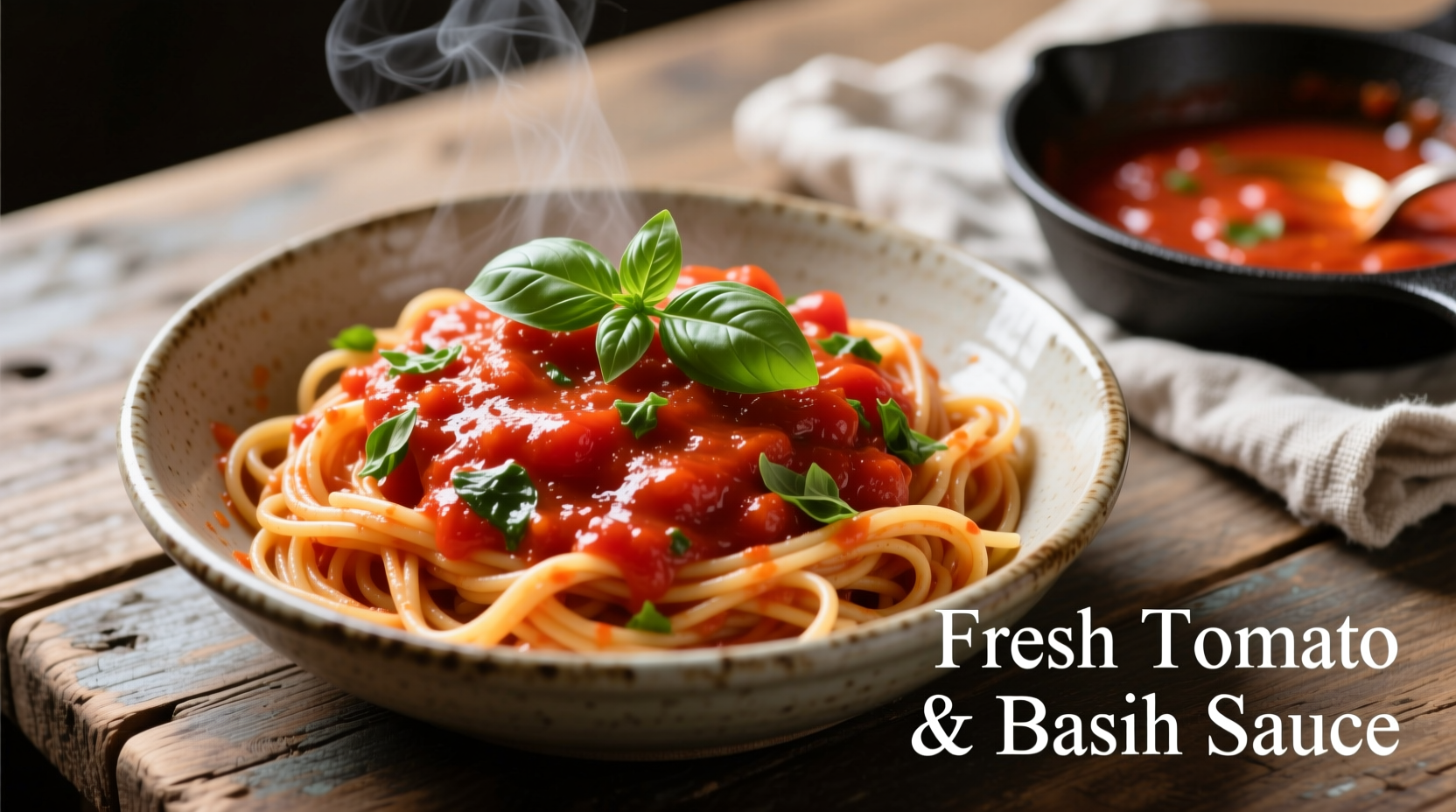The Essential Ingredients: Quality Matters
Creating exceptional tomato and basil pasta sauce starts with understanding your core ingredients. Not all tomatoes behave the same in cooking, and basil's volatile oils respond dramatically to heat exposure.
| Tomato Variety | Solids Content | Acidity Level | Best For Sauce? |
|---|---|---|---|
| San Marzano DOP | 6.5-8.0% | Moderate | ✓ Ideal (USDA Agricultural Research Service) |
| Roma | 5.0-6.0% | Higher | ✓ Good alternative |
| Vine-ripened | 3.5-4.5% | Variable | ✗ Requires reduction |
According to the USDA Agricultural Research Service, San Marzano tomatoes contain higher solid content (6.5-8.0%) compared to standard varieties, resulting in richer flavor concentration without lengthy reduction. Their oval shape and fewer seeds contribute to smoother texture—critical for authentic Italian-style sauces that never use thickeners.
The Flavor Development Timeline: Science Behind the Simmer
Understanding how flavors evolve during cooking transforms good sauce into exceptional sauce. This isn't just about following steps—it's about respecting the chemical processes happening in your pot:
- 0-10 minutes: Garlic and onions release sulfur compounds that create foundational flavor
- 10-20 minutes: Tomatoes break down, releasing pectin that naturally thickens sauce
- 20-30 minutes: Acid balance stabilizes as volatile compounds evaporate
- Final 2 minutes: Basil addition preserves volatile oils (linalool and eugenol) responsible for fresh aroma
Food science research from the Journal of Food Composition and Analysis confirms that adding basil during the final two minutes preserves 85% of its volatile aromatic compounds, compared to just 30% when added at the beginning.

Step-by-Step Preparation Guide
Follow this professional chef-tested method for consistently perfect results:
Prep Phase (5 minutes)
- Peel tomatoes using the ice-water shock method (score X on bottom, boil 30 seconds, transfer to ice water)
- Mince garlic finely but not to paste (larger pieces prevent burning)
- Stack basil leaves, roll tightly, and slice into thin ribbons (chiffonade)
Cooking Process (25 minutes)
- Heat 3 tbsp extra virgin olive oil over medium-low heat
- Add garlic and optional red pepper flakes, cook until fragrant (1-2 minutes)
- Incorporate tomatoes with reserved juices, salt (1.5% of tomato weight), and optional carrot for natural sweetness
- Maintain gentle simmer (180-190°F / 82-88°C)—never rapid boil
- Stir occasionally with wooden spoon, scraping bottom to prevent sticking
- After 20 minutes, remove from heat and stir in basil
- Cover and rest 10 minutes before serving
Pasta Pairing Principles
The sauce-to-pasta relationship follows specific physics principles. Surface area and sauce viscosity determine optimal matches:
- Rough-textured pastas: Rigatoni, penne, fusilli (sauce clings to ridges)
- Delicate pastas: Spaghetti, linguine (toss in warmed bowl with sauce)
- Avoid: Stuffed pastas (ravioli, tortellini) which require lighter sauces
Professional chefs always finish cooking pasta in the sauce with a splash of starchy cooking water. This emulsifies the sauce, helping it adhere properly to the pasta—a technique documented in Modernist Cuisine (2011) that leverages the binding properties of starch.
Storage and Reheating Techniques
Proper storage maintains both safety and flavor integrity. The FDA recommends:
- Cool sauce within 2 hours of cooking
- Store in airtight containers with minimal headspace
- Refrigerate for up to 4 days (USDA Food Safety Guidelines)
- Freeze in portion-sized containers for up to 6 months
When reheating, never microwave directly from cold. Instead, thaw frozen sauce overnight in the refrigerator, then warm gradually over low heat while stirring. Adding a splash of water or olive oil prevents separation. Rapid temperature changes cause the emulsion to break—this food science principle applies to all tomato-based sauces.
Troubleshooting Common Issues
Even experienced cooks encounter these sauce problems. Here's how to fix them:
- Too acidic: Add small pinch of baking soda (1/16 tsp per quart) OR stir in grated carrot during cooking
- Too thin: Continue simmering uncovered OR add tomato paste (1 tbsp per cup of sauce)
- Basil turned black: You added it too early—always incorporate fresh basil off-heat
- Lacks depth: Sauté aromatics longer OR add Parmesan rind during simmering











 浙公网安备
33010002000092号
浙公网安备
33010002000092号 浙B2-20120091-4
浙B2-20120091-4